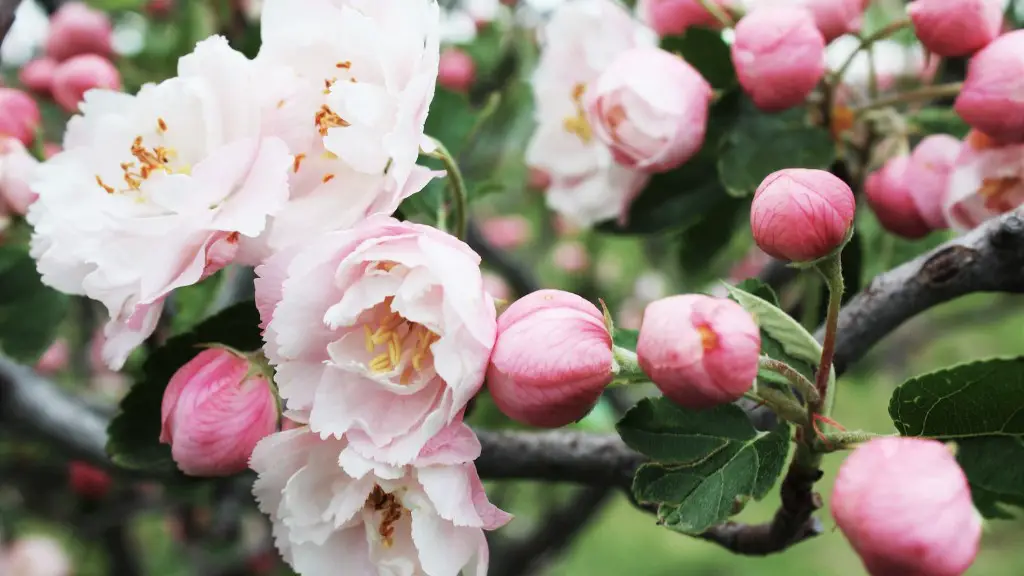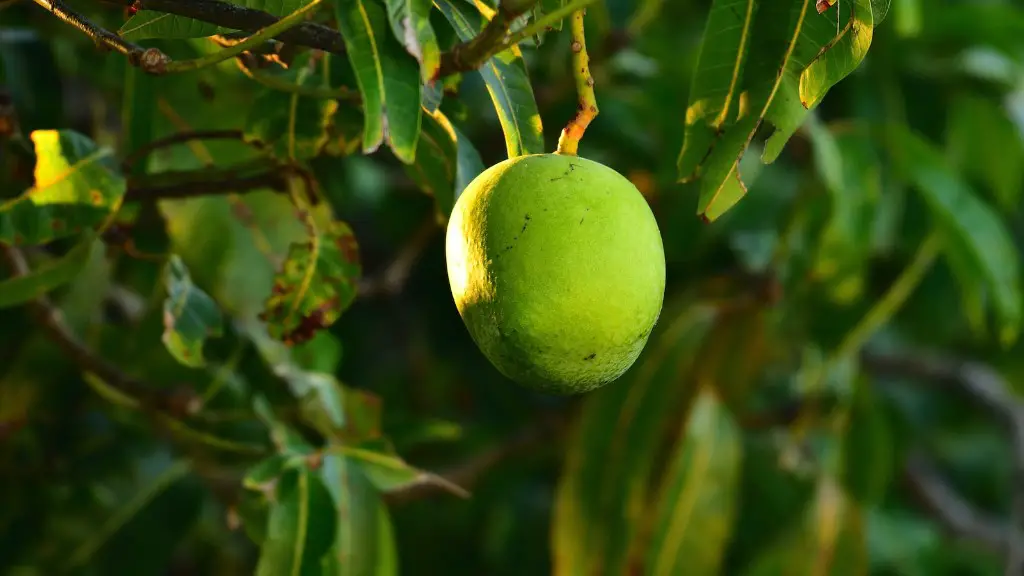Avocado trees are one of the most popular trees in the world and are widely cultivated for their delicious, creamy fruit. There is no better way to enjoy an avocado than to grow it at home, and the easiest and most efficient way to do so is to grow an avocado tree from an avocado seed.
The process of growing an avocado tree from seed is relatively straightforward and can be completed with a few basic materials. To start, an avocado seed should be washed and dried, and it will then need to be securely suspended over a jar of water with three toothpicks, ensuring that the seed is half submerged in the water. The water should be changed every couple of days to defer the growth of bacteria and fungus. After one to two weeks, the seed should start to split and the roots should take shape. It is important to ensure that the water level remains constant, as the roots are very sensitive to changes in water levels, and that the root is given adequate air and moisture to foster growth.
Once the root has begun to form and reach a length of two to three inches, the seed should be transferred to a pot of soil that is well drained, such as a mixture of peat moss, sand and soil. The seed should be covered with 1-2 inches of the soil mix and then the pot should be placed in a warm and sunny location, such as near a south-facing window or on a balcony, with temperatures of around 70-85 degrees Fahrenheit.
To encourage proper development of the avocado tree, it is important to keep the soil moist, but not soggy. The soil should be watered when it starts to dry out and an occasional misting of the leaves is beneficial. When the avocado tree reaches a height of eight inches, it should be transplanted into a much larger pot with a soil mix containing added nitrogen, and it should be fertilized at least twice a month to encourage flowering and fruit production.
Growing an avocado tree from seed can be a very rewarding experience, from start to finish. With the proper knowledge and care, an avocado seed can grow into a full-sized tree and produce delicious, nutritious avocados for many years.
Nutrition for an Avocado tree
The nutrition of an avocado tree is essential for its survival and growth, and it must be taken into consideration in order to ensure the health of the tree and its fruit. In order to maximize the potential of an avocado tree, it must be given a balanced diet of nitrogen, phosphorus and potassium, as potassium encourages healthy fruit production, while phosphorus and nitrogen are necessary for root and shoot growth. When fertilizing an avocado tree, it is important to use an organic fertilizer that is specifically tailored for fruit trees, as these fertilizers are high in nitrogen and phosphorus, and also contain beneficial trace elements.
In addition to fertilizing regularly, it is also important to mulch around the avocado tree to provide additional organic material, which helps to add vital nutrients to the soil. It is also important to keep the surrounding soil loose and aerated to ensure that the tree’s roots can get adequate oxygen and hold onto moisture. Applying mulch and aerating the soil should be done at least once a year.
With a combination of the right nutrients and proper care, an avocado tree can grow healthily and produce its beautiful and nutritious fruit.
What to Expect from an Avocado Tree
Growing an avocado tree from seed can be a time consuming process, but it will be well worth the wait when the tree finally bears fruit. The first fruit from an avocado tree usually takes three to four years to ripen, but with proper care and nutrition, it can bear fruit in as little as nine months. An avocado tree can grow up to 25 to 30 feet tall, so it is important to provide it with the proper space and adequate sunlight for it to reach its full potential.
It is important to remember that due to the unique shape of an avocado tree, it may be difficult to predict when it will bear fruit. An avocado tree may not begin to bear fruit until it is at least three years old, and even when it does, some varieties will only produce a small amount of fruit. Also, different varieties of avocados tend to produce fruit at different times of the year, so it is important to research the varieties of avocado trees and the amount and timing of their fruit production.
Avocados are one of the most popular fruits in the world and are packed with healthy vitamins and minerals, making them an excellent addition to any diet. With patience and dedication, growing an avocado tree from seed can be a very rewarding experience, as the tree will produce delicious, nutritious fruits for years to come.
Pests and Disease
As with any tree, an avocado tree can be prone to pests, diseases, and other problems that can interrupt the growth process. Some of the most common problems that can affect an avocado tree include root rot, aphids, mites, and fungus. It is important to identify the pest or disease quickly and take steps to treat it in order to avoid further damage to the tree.
Root rot can be caused by overwatering or poor drainage and can cause the leaves to wilt, the roots to rot, and the tree to die. To prevent this, it is important to ensure the tree is planted in well-draining soil and the soil is kept moist but not soggy. Aphids, mites and fungus can also affect an avocado tree and should be treated immediately with an insecticide or fungicide.
It is also important to watch out for rodents and animals that can damage the bark or roots of the tree. To prevent this, it is important to create a barrier around the tree. Additionally, pruning is important to maintain the shape and health of the tree and can also help reduce the presence of pests and diseases.
Harvesting Avocados
Harvesting avocados from an avocado tree is one of the most exciting moments of owning an avocado tree. When the avocados are ready to be picked from the tree, it is important to pick them when they are ripe, as this will ensure they have the best flavor and texture. The ideal way to determine if an avocado is ripe is to gently press the skin, as ripe avocados will be slightly softer and will give to the pressure. The color of the avocado may also be an indicator of ripeness, as ripe avocados often have a darker hue than unripe avocados.
In order to harvest the avocados, it is important to be gentle when handling the tree and its fruits. When picking the avocados, it is important to grasp the avocado firmly but not too tightly, and to twist it gently until it comes away from the tree. It is then important to set the avocado aside and to inspect it for any visible damage, before placing it in a basket or other container.
Avocado harvesting is a joyous moment for anyone who has taken the time and effort to grow an avocado tree from seed, but it is important to remember to be gentle with the tree and to use proper techniques when picking the avocados. With careful care and patience, an avocado tree can provide its owners with delicious, nutritious avocados for many years to come.
Storing Avocados
Once the avocados have been harvested from the tree, they must be stored properly in order to ensure they stay as fresh and flavorful as possible. Unripe avocados should be stored at room temperature in a cool, dark area, and they should be checked daily for signs of ripening.
Once an avocado is ripe, it should be eaten within a couple of days or stored in the refrigerator for a few days. It is important to resist the temptation to leave ripe avocados out on the counter, as this can cause them to lose their flavor and texture. Before eating a ripe avocado, it is important to wash it carefully to remove any remaining dirt or pesticides, and it can also be cut into quarters and stored in the refrigerator in an airtight container.
Avocados are a delicious and nutritious addition to any diet, and it is important to ensure they are stored properly to maximize their freshness and flavor. With the proper care and storage, avocados can be enjoyed for days after they are harvested.
Maintenance for an Avocado Tree
In order for an avocado tree to stay healthy and function properly, it is important to provide it with the necessary maintenance and care. Proper pruning is essential for the avocado tree and should be done twice a year, once in the summer and once in the winter. It is important to remove any dead or diseased branches to keep the tree healthy, and it is also important to shape the tree as it grows in order to allow for adequate air circulation and light.
It is also important to check the tree regularly for signs of pests or disease, and to fertilize the tree and apply mulch at least twice a year. Additionally, it is important to support the tree if it is surrounded by wind, as a strong gust of wind can cause the branches to break.
By taking proper measures to maintain the avocado tree, it is possible to ensure the health of the tree and improve its chances of producing delicious avocados. With the proper care and patience, an avocado tree can provide its owner with a plentiful supply of delicious and nutritious avocados.


